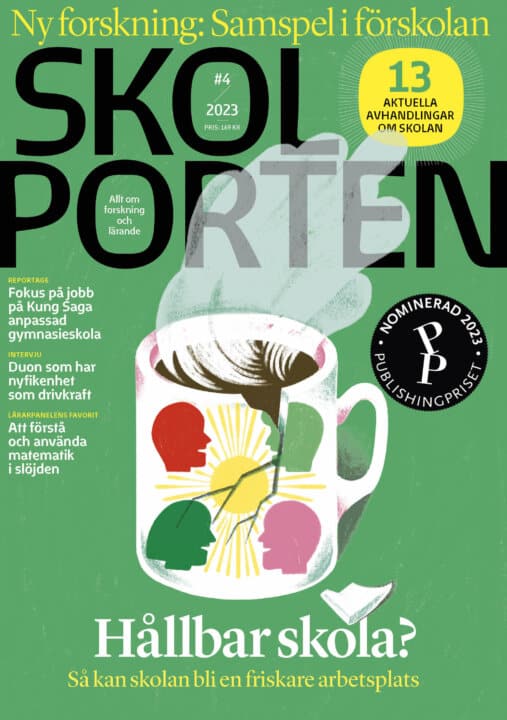”Cut and Break”-beskrivningar i svenskt teckenspråk: Barns och vuxnas avbildande verbkonstruktioner
Pia Simper-Allen har i sin avhandling utforskat barns avbildande verbkonstruktioner som på svenskt teckenspråk beskriver separationsaktiviteter med och utan verktyg med särskilt fokus på och handaktivitet.
Pia Simper-Allen
Professor emerita Brita Bergman, Stockholms universitet Docent Johanna Mesch, Stockholms universitet
Professor Ritva Takkinen, University of Jyväskylä, Finland
Stockholms universitet
2016-10-28
Cut and Break-beskrivningar i svenskt teckenspråk: Barns och vuxnas avbildande verbkonstruktioner
Cut and Break-descriptions in Swedish Sign Language : Children’s and adults’ depicting verb constructions
Institutionen för lingvistik
Cut and Break-descriptions in Swedish Sign Language : Children’s and adults’ depicting verb constructions
Previous studies on children’s acquisition of depicting verbs in signed languages have chiefly studied the use of classifiers in verbs of motion and location, particularly the order in which the different classes of handshape are acquired. The age of the children in these studies have ranged from age three to thirteen, and an important finding has been that classifier constructions are not fully acquired until early adolescence. Most of these studies have used an elicitation tool to investigate the production and comprehension of classifiers, but have not provided any adult target norms of the test items when scoring children’s achievement.
The present dissertation provides a detailed description of both adults’ and children’s verb constructions in descriptions of cutting and breaking events in Swedish Sign Language (SSL), specifically focusing on the number of hands used in signing, handshape category and hand activity, which has not been previously described for any sign language. As part of this study, 14 deaf adults (ages 20–72) and 11 deaf children (2;1–6;6) of deaf parents, all native-users of SSL, performed a task that involved describing 53 video clips of cutting and breaking events. The clips show an event in which an actor separates material, either with the aid of a tool or without. Additionally, some clips show an entity separating by itself without an actor being involved.
The adults described the events with depicting verb constructions that are produced with two hands. The analysis of the handshapes produced three categories: substitutor, manipulator and descriptor. The most frequent construction in the description of events without a tool was two acting manipulators (depicting a hand handling an object), whereas in descriptions of events with a tool the combinations were acting substitutor or manipulator with a non-acting manipulator. The acting hand referred to the tool and the non-acting manipulator to the affected entity. In descriptions of events without an actor, either two substitutors or two manipulators were used. In addition to depicting verb constructions, the descriptions also contained resultative complements, i.e. signs carrying information about the result of the activity being carried out. The complements were either lexical signs or some form of depicting verb construction. Similar observations have not been noted for any other signed language.
In the manner of the adults, the children used depicting verb constructions in descriptions of cutting and breaking events (681 tokens), but they also used pointing and lexical signs (64 tokens). Nearly half of the verb constructions that were used by the children corresponded to the adult target forms. The majority of the constructions describing events without a tool corresponded to the adult target forms using two acting manipulators, even among the youngest informants. In events with a tool, only a third of the constructions corresponded to the adult target forms (emerging at 4;8 – 5;0); the remaining two-thirds were deviating constructions in terms of number of hands, handshape category and hand activity. Resultative complement are sparsely used by children (57 tokens), the most chosen type of complement being lexical signs.
Pervasive features of children’s constructions were the addition of contact between the hands and a preference for substitutors, something not found in adults’ constructions. These features were elucidated within the framework of Real Space blending theory, with the study showing that children first use visible blended entities and that invisible blended entities do not emerge until 4;8–5;0.
Relaterade länkar

Biologi
 Åk 7–Vux
Åk 7–Vux Hållbar utveckling i förskolan
 Fsk
Fsk 




